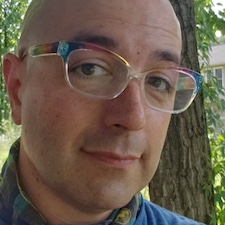We are facing an important moment to shift our purpose in solar energy. In the past, if you were to think about solar you would tend to equate that word with a technology, like photovoltaics (PV) or solar hot water (SHW), and maybe even concentrating solar power (CSP). The point is, you are thinking of the technology that enables solar energy conversion, not the rivers of light flowing in to our atmosphere, soils, homes, skin, and eyes. There is so much more to solar energy in a vast, connecting way, that brings people together in communities, and connects each community to their special place of living.
It’s not your fault, we really don’t measure solar energy in any effective ways yet. Not on a regular basis at least, like thermometers, thermostats, or rain gauges. And don’t feel bad, as most meteorologists don’t know what to measure either (degress of cloudy/overcast skies are not really useful indicators for solar energy conversion either–go figure).
So I am here to make a call, a request even, for citizen participation and change in the way that we observe solar energy, and then talk about solar energy. As I have noted before, in forming our new school of thought solar ecology, our future with a climate changed in new ways is tied to our ability to connect with each other, locally, and connect with that space that we live in, using solar energy flows as a compelling vehicle to enable that connectivity:
The future of solar energy’s rapid expansion ties directly to our ability to rapidly build human capacity and lower barriers to entry at all levels of education. Solar energy represents systems-based research and education. Because we as a nation are rebuilding our solar knowledge and local vernacular for solar design from a very low capacity (as of 2005), and because Penn State developed its solar presence much earlier than other institutions through two Solar Decathlons and multiple education and outreach programs, it should interest you that Penn State is a national and international leader in solar energy research and education. Through this leadership, we now seek to redefine the grand challenges in solar energy for the next 20 years. This next era of solar will be so much more diverse than photovoltaics alone, leading to new services that we have yet to imagine, much like we could not quite imagine the diverse services of social networks, weather, banking, and email from a “phone” back in 1999. There is a big systems field emerging for solar within the context of the environment, society and technology, connecting solar science with design, business, art, lifestyle, health, and well-being. We are calling that encompassing systems field
solar ecology.
-JRSB

